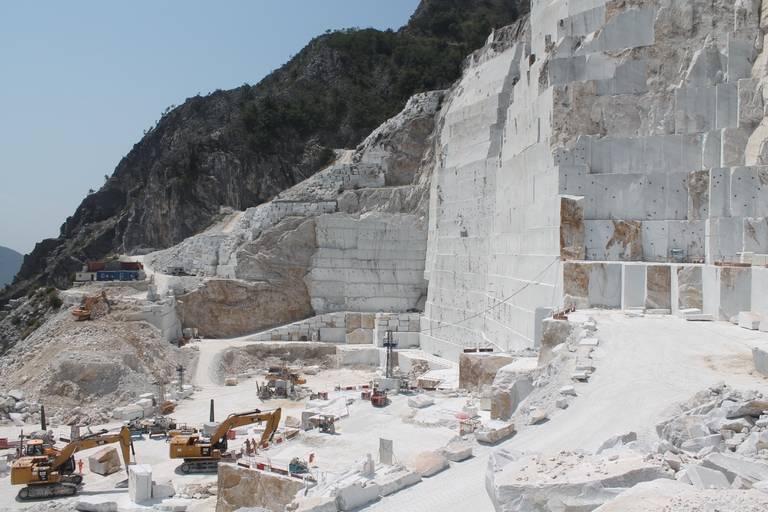https://www.lifegate.it/fili-pari-marmo-tessuti
- |
- Fili Pari is an innovative startup, founded by Francesca Pievani and Alice Zantedeschi, which connects two apparently distant supply chains:marble and fashion.
- The marble dust left over from manufacturing is used to create Marm\more, a patented microfilm to be applied to fabrics to make them resistant and waterproof.
- An example of a circular economy that enhances local resources.
Wear the stone.Taking a cold and heavy element to transform it into something enveloping, light and soft.Bringing together two materials that seem very distant, marble and fabrics, merging their distinctive, sometimes contrasting, characteristics.From this suggestion the collections Of Even threads, an innovative startup founded by Francesca Pievani And Alice Zantedeschi, to enhance the territory and its raw materials thanks to weaving of two supply chains.On the one hand the marble, which has a key role in the art history of our country;on the other side the fashion, another fundamental sector for Made in Italy.An approach linked tocircular economy that weaves together innovation and sustainability, quality and know-how.

Fili Pari's innovation:a fabric treated with marble dust
The startup recovers marble dust from quarrying operations and uses it as a raw material to create Marm\more, a patented microfilm to be applied to fabrics to give them new technical specifications of great interest.In fact, the garments become waterproof, resist wind and abrasion and retard the flame, while remaining soft to the touch.The applications of the Marm\more film range from design (interior and exterior) to automotive, up to the creation of clothing and accessories.
This is an activity recycling in which a waste material that has great value both intrinsically and at the level of culture and tradition, linked as it is to our artistic history, is reintroduced into a production process.A technological innovation that also acquires a strong narrative and awareness-creating meaning.

The project was born on the benches of Polytechnic of Milan where it was also incubated, and the name is an acronym of Ali and Fripi, the nicknames of the two founders, friends and study colleagues.For its innovative approach which also allows it to give value to the by-product of an industry with a particularly impact on the environment that hosts it, Fili Pari has become part of the ecosystem of naturally sustainable startups of LifeGate Way.
The sustainability of garments treated with marble
The basic colors of the Fili Pari collection are those of marble: black, green, white, yellow and red.The patented coating in fact allows the marble itself to be used as a colourant, avoiding dyeing fabrics with chemical pigments. Unique, original and natural shades therefore, which come from the deepest soul of the stone.We have the green Alpi marble, coming from the Aosta area;the yellow mori typical of the mountains around Trento;and Verona red which results in a brilliant salmon color.White cannot be missing, typical of Carrara marble but also of calcium carbonate from the Verona area.However, the ebony black marble from the Bergamo area is the undisputed protagonist of the collection, with the characteristic salt and pepper effect that it gives to the garments.

The districts with which the startup collaborates most are therefore Bergamo, Verona and Carrara, rolled into one short-range supply chain which allows it to localize production in the area.In fact, Fili Pari supplies marble powder directly to various partner textile companies.Speaking of fabrics, to stay in perspective zero waste and further apply the principles ofcircular economy, the Marm\more technical material is used in combination with soft wools, high quality warehouse surpluses from large fashion companies, recycled cottons or recycled materials such as certified nylon.Finally, when the garments reach the end of their useful life, Fili Pari itself takes charge of the recall programme.
The entire production cycle, with the involvement of those who carry out the quarrying and processing of the raw material, also meets the need to find alternative solutions to the problems that these actors encounter in disposal of marble by-products, characterized by high costs and high complexity.

